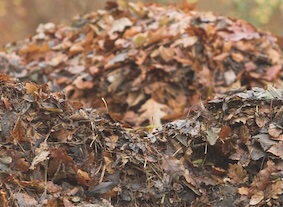Asparagus
Views: 1244

Asparagus is my favorite opening act in the kitchen’s season-long romp with fresh farmers market ingredients. I rarely buy it out of season, as that means it has flown more miles than I have in the last six months. I love how fleeting it is when sourced locally. It’s only around for a little while, so we MUST have some for dinner tonight.
My parents grew a small row of asparagus in our garden, but having it at ready access never gave me the same thrill as hunting for it along our farm’s hedgerows. Birds love to eat the little red berries that develop on the plants’ wispy branches. They pluck the berries, fly off into the hedges and eventually poop out the seeds. A few years later, and if your eyesight is any good, you’ll spot the green stalks emerging through the hedge’s still-brown rambling brambles. And the birds had plenty of asparagus berries to eat—my cousin grew 5 acres of it right across the street.
An Asparagus Makes the PHS Gold Medal Plant List
The Pennsylvania Horticultural Society has recently announced its Gold Medal Plants for 2024, and to my delight an asparagus variety was on the list! The PHS Gold Medal Plant Program provides plant suggestions for anyone looking for the perfect tree, shrub, edible, vine or perennial plant. These selections are chosen based on their ease of cultivation, multiple seasons of interest, commercial availability, appropriateness for the Mid-Atlantic region and value to wildlife. PHS and their board of nursery owners, professional horticulturists and gardening enthusiasts picked the asparagus variety ‘Millennium’ as this year’s edible recommendation. While I am not in the Mid-Atlantic, Millennium’s description appears to make it a good choice for southern New England gardens like my own.
According to the PHS description, ‘Millennium’ is one of the highest-yielding asparagus varieties on the market. It produces uniform, tight-tipped and tender spears with excellent flavor. Once the season’s harvest is done, the rest of the plant will develop into a tall (3-5 ft.) and somewhat slender (1-3 ft. wide) hedge with wispy, fern-like foliage. A bonus of keeping the foliage around is that turn a lovely yellow color in the fall before going dormant for the winter. And by the way, asparagus is a perennial vegetable! Hardy in USDA Zones 3-10, it’ll come up year after year. If the multi-year aspect of asparagus didn’t grab your attention, maybe this will: Asparagus is deer, disease and drought resistant. Those are definitely winning characteristics in my book.
Growing Tips for Asparagus
- Choose a site that is sunny with loose, fertile and evenly moist well-draining soil. Sandy soils are good.
- Asparagus grows both vertically and horizontally. You’ll want a spot that can accommodate the asparagus plants’ deep root system. Also give its roots plenty of space to grow outward, so not too close to anything that can block that growth.
- You can start from the beginning and grow asparagus from seed, just like those birdies do. Or if you don’t want to wait years for a harvestable crop, purchase asparagus crowns. These consist of a bud and long roots which you will plant in a furrow about 6-12 inches deep.
- Although I mentioned above that it is drought tolerant, be sure it does have moisture during its stem and fern growing periods.
- Harvest spears only through June. Continue to allow spears to grow into the ferny form of the plant. This foliage brings much-needed nutrition to the crowns so that they can continue to grow bigger and produce spears the following spring.
- If planting crowns, wait 2 years before you begin harvesting spears. It needs to grow those ferns so it can power its crown!
- Mulching the asparagus will help keep weeds down and it also keeps the soil consistently moist and cooler. However, this can also delay spear emergence in the spring. Push the mulch away from the crowns in early spring to help the soil warm up and encourage the spears to grow.
If you want to learn even more about growing asparagus, the University of Minnesota Extension program has some in-depth information HERE. Or skip all that cultivation and go hunting for it in the hedgerows. It’s actually quite a thrill!
Meet Ellen Wells
When you’re raised on a farm, you can’t help but know a thing or two about gardening. Ellen Wells is our expert on edible gardening.…
Ellen's Recent Posts

Repurposing Decorative Pumpkins and Gourds






